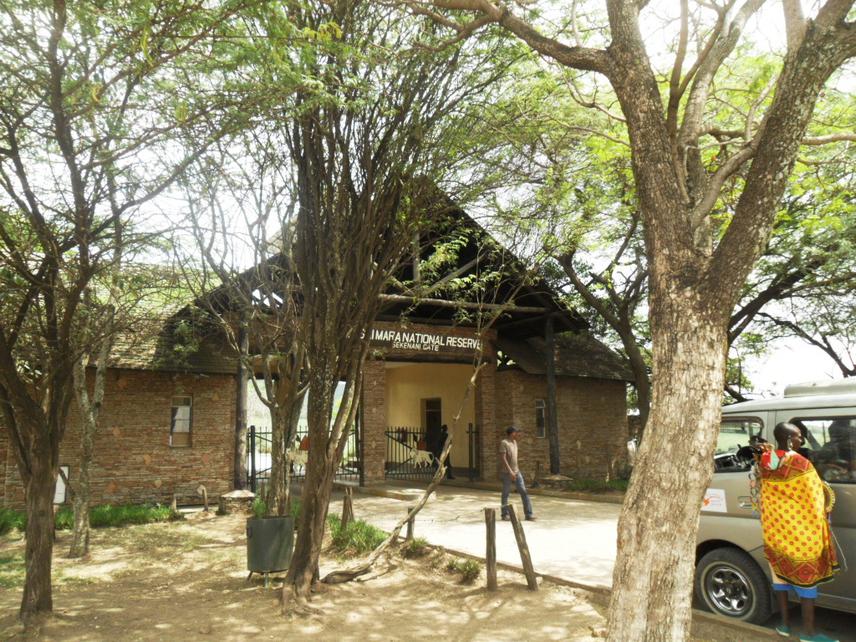Richard Kerongo Mose
Study Effect Of Climate Change On The Migration Of Wildebeest And Its Effect On Eco Tourism In The Maasai Mara Ecosystem, Then Share The Information To The Community Through Environmental Education To School Children.

The Maasai Mara Game Reserve main entrance.
Annually the wildebeest migrate back and forth between the Serengeti in Tanzania and the Maasai Mara in Kenya. The animals accompanied by large herds of zebras, the eland, the Thomson and grants gazelles together with a number of carnivores brave the crossing of the crocodile infested trans boundary Mara river that separates the Serengeti and the Maasai Mara in search of fresh pasture, fresh water and breeding grounds. This spectacular climate dependent natural phenomenon forms the backbone of eco tourism in the Maasai Mara. In the recent times the migration has been reported to being more and more irregular with the animals choosing to spend less time on the Maasai Mara ecosystem much to the worry to eco tourism stakeholders and the local community.
The main reasons being fronted as the main causes of this worrying new trend is the changing climate more so because the Maasai Mara has of recent experienced prolonged drought which led to reduced pasture and water within the ecosystem, thus proving to be less attractive to the migrating animals.
This project aims at using a trans disciplinary approach to investigate these phenomena and come up with sustainable solutions.
Achievements/contributions
The work aims at achieving the following:
a) Collect and document indigenous knowledge on climate change and wildebeest migration patterns in the Maasai Mara.
b) Collect and document best practices, successes and failures of eco tourism as a community based natural resource management strategy in the Maasai Mara.
c) Study data on weather patterns and rainfall and link it with the migration of the wildebeest to help understand how they have changed over time.
d) Use the data collected to create future migration scenarios through modelling to help the county government leaders and other ecotourism and ecosystem conservation stakeholders in their decision making.
e) Initiate or strengthen existing capacity of the local communities and school children on climate change resilience, mitigation and adaptation with an aim of developing future climate change champions by sharing knowledge through multi stakeholder workshops and environmental education to school children.